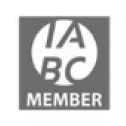Executive communications: Is your speechwriter putting you on the spot?
 CEOs and other leaders who’ve never worked with a speechwriter before sometimes wonder about the process.
CEOs and other leaders who’ve never worked with a speechwriter before sometimes wonder about the process.
“How will this speechwriter get my ideas to resonate with the audience I need to influence?”
It’s an important question in executive communications. Because when you work with a speechwriter, it’s the speechwriter’s job to do the hard digging that’s absolutely required to go deeper.
It’s the speechwriter’s job to move quickly from what’s literally “right off the top of the speaker’s head” to get to the good stuff: better thinking, better points and better stories that will challenge the speaker to ultimately challenge the audience.
Speechwriters that don’t dig deep enough will struggle.
Their speeches will struggle.
And their speakers will struggle.
Right now I’m reworking a signature speech for a brand-new audience. The executive communications topic is a tough one: The organization is asking its employees to make some new (and sometimes painful) sacrifices they’ve never had to make before.
I admit: It’s tempting to gloss over the many elephants in the room so the audience doesn’t squirm their way right out of their seats.
But doing so would be a grave mistake for anyone in executive communications. Because if that happens, there’s no chance the audience will change either their thinking or their behavior. And that means the time to speak will be a wasted opportunity.
It’s up to the speechwriter working in executive communications to identify when speakers are trying to take the easy way out and convince them they need to do better.
During my last meeting about this signature speech, I challenged the speaker to give me some concrete examples of exactly what this new audience needed to do differently, starting right now.
 He gave me everything off the top of his head. Not nearly good enough, I knew.
He gave me everything off the top of his head. Not nearly good enough, I knew.
- Much too general.
- Much too didactic.
- Much too preachy.
We kept going. We took his general ideas, one at a time, and talked some more.
- “What would that look like in the field?”
- “How would they do that?”
- “Why would they even want to do that?”
- “What would be the outcome?”
- “What could they do next?”
- “What if they don’t do that?”
Dig. Dig. Dig.
Speechwriters in executive communications who don’t put their speakers on the spot in effect let them off the hook.
Whenever I’ve challenged speakers (in so many words) to defend their various positions on a topic, they gradually but eventually dive well below their surface thinking, and suddenly their very best stuff emerges.
As so does a much better speech.

















